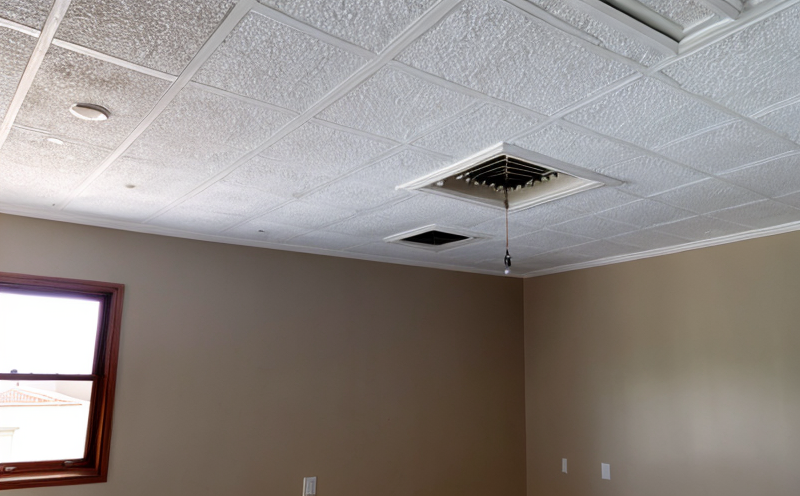Ceiling system inspection
The inspection of ceiling systems is a critical component in ensuring the safety, durability, and compliance with building codes. In construction projects, ceilings are not just aesthetic elements; they play a vital role in structural integrity, fire resistance, sound insulation, and thermal performance. Proper inspection involves a comprehensive evaluation to ensure that all aspects meet industry standards and regulatory requirements.
Building codes such as the International Building Code (IBC), ASHRAE 90.1, and LEED certification standards emphasize the importance of ceiling systems in achieving energy efficiency, occupant comfort, and safety. A well-inspected ceiling system ensures that it can withstand environmental stresses, supports structural loads, provides fire resistance, and maintains acoustic and thermal properties.
Inspectors use a variety of tools and methods to assess different aspects of ceiling systems. For instance, structural integrity checks often involve visual inspections combined with non-destructive testing (NDT) techniques such as ultrasonic testing or infrared thermography. Fire-resistant ratings are verified through destructive tests where samples are exposed to controlled fire environments.
Acoustic performance is evaluated using sound transmission class (STC) ratings and impact insulation class (IIC) ratings, which measure the ability of a ceiling system to reduce noise transfer between spaces. Thermal performance is assessed by measuring thermal resistance values (R-values) and air infiltration rates, ensuring that the building envelope meets energy efficiency standards.
During inspections, it's essential to document any deficiencies or deviations from the expected performance levels. These documents serve as valuable records for future maintenance and potential legal compliance issues. By adhering to these rigorous inspection procedures, construction professionals can ensure that ceiling systems are not only functional but also safe and compliant with all relevant standards.
Regular inspections of ceiling systems are crucial throughout a building's lifecycle. Post-construction, ongoing monitoring ensures that any deterioration or damage is addressed promptly. This proactive approach helps maintain the integrity of the ceiling system and extends its lifespan, thereby reducing maintenance costs and potential liability issues.
Why It Matters
The importance of ceiling system inspections cannot be overstated in the context of construction and building inspection. Properly inspected ceilings contribute significantly to the overall safety, durability, and energy efficiency of a building. Structural integrity is paramount for ensuring that ceilings can support the weight they are designed to bear without compromising the stability of the entire structure.
- Structural Integrity: Ensuring that ceiling systems can withstand environmental stresses and loads is critical for preventing collapse or damage during extreme weather conditions or heavy usage.
- Fire Resistance Ratings: Fire-resistant ceilings are essential in reducing the spread of fire within a building, thereby protecting occupants and minimizing property damage.
Acoustic performance is equally important, especially in commercial spaces where noise control is vital for maintaining comfortable working environments. Properly designed and inspected ceiling systems help minimize sound transfer between different areas, enhancing productivity and comfort.
- Acoustic Performance: Ceiling systems that meet the necessary acoustic performance criteria contribute to a healthier indoor environment by reducing noise pollution and improving speech clarity in various spaces.
- Thermal Efficiency: Efficient thermal insulation provided by well-inspected ceilings helps maintain comfortable indoor temperatures, leading to reduced energy consumption and lower utility costs.
In summary, ceiling system inspections are fundamental for ensuring that buildings meet the highest standards of safety, durability, and compliance. By adhering to rigorous inspection protocols and maintaining comprehensive documentation, construction professionals can significantly enhance the performance and longevity of ceiling systems.
Customer Impact and Satisfaction
Implementing thorough ceiling system inspections has a direct positive impact on customer satisfaction by ensuring that buildings are safe, energy-efficient, and in full compliance with relevant codes and standards. This approach not only protects the interests of building owners but also enhances the overall quality of life for occupants.
- Enhanced Safety: Safe ceilings contribute to a safer environment, reducing potential risks associated with structural failure or fire hazards.
- Better Indoor Climate Control: Efficient thermal insulation provided by well-inspected ceilings helps maintain optimal indoor temperatures, improving comfort and satisfaction for residents and employees.
The satisfaction of customers is further enhanced through the proactive identification and correction of any deficiencies or deviations from expected performance levels. This ensures that buildings meet not only regulatory requirements but also exceed expectations in terms of quality and reliability.
Moreover, regular inspections provide valuable insights into the current state of ceiling systems, allowing for timely interventions before minor issues escalate into more significant problems. Such proactive maintenance strategies contribute to long-term cost savings and reduced downtime, ultimately leading to higher levels of customer satisfaction.
Competitive Advantage and Market Impact
Ceiling system inspections offer a competitive advantage in the construction industry by ensuring that buildings are not only safe but also compliant with the latest codes and standards. This commitment to quality sets companies apart from competitors who may overlook such important details.
- Regulatory Compliance: By adhering to rigorous inspection protocols, builders demonstrate their commitment to meeting or exceeding regulatory requirements. This enhances trust and credibility among clients and stakeholders.
- Innovation in Design: Thorough inspections can identify areas for improvement and innovation, allowing companies to introduce new designs that are both functional and aesthetically pleasing.
Achieving and maintaining a competitive edge in the market is also facilitated by regular inspections. These ensure that buildings remain up-to-date with the latest codes and standards, positioning companies as leaders in sustainable construction practices. This reputation translates into increased business opportunities and stronger client relationships.
In addition to these direct benefits, ceiling system inspections contribute significantly to the broader market impact of the construction industry. By promoting safer, more energy-efficient buildings, inspection services play a crucial role in driving positive change within the sector. This collective effort contributes to healthier communities and a more sustainable built environment, ultimately fostering greater trust and respect among all stakeholders.





